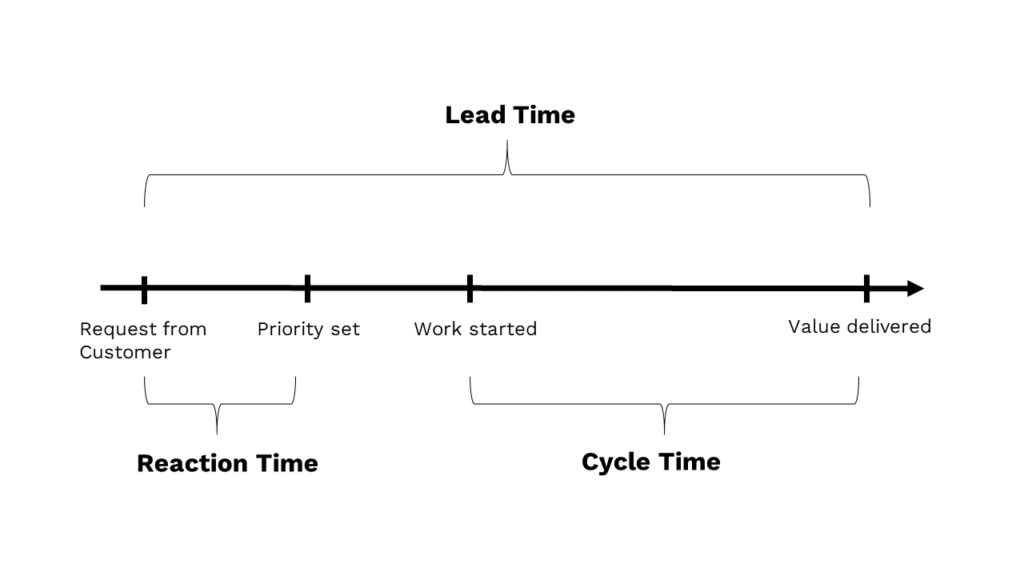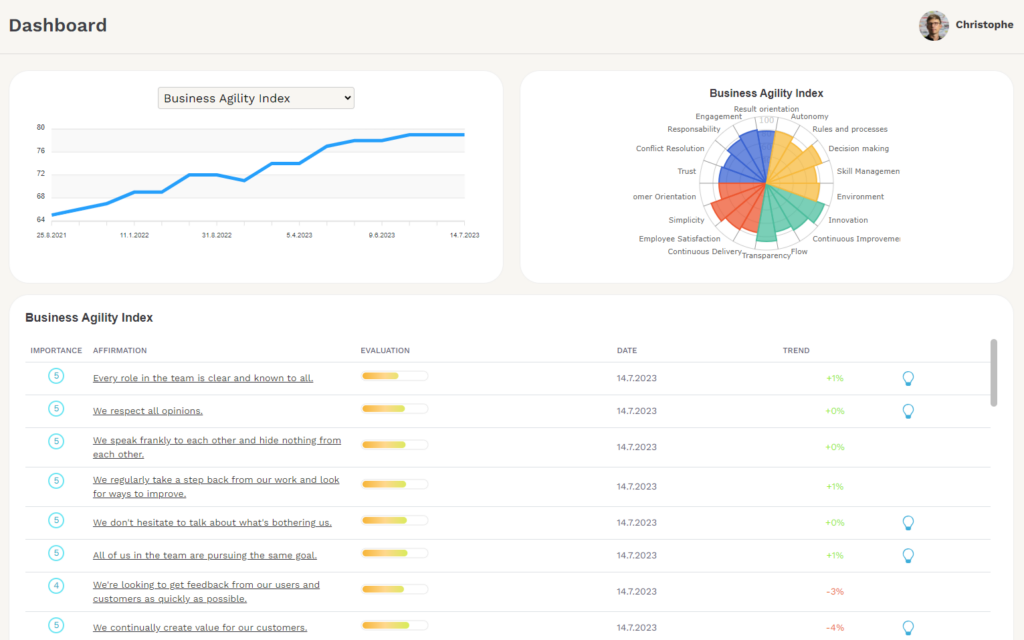Agile transformations have become a cornerstone of organizational evolution, enabling companies to stay nimble, adaptive, and responsive in today’s fast-paced business environment. This article aims to present a comprehensive overview of agile transformation KPIs, helping organizations track their journey towards agility.
Agile transformation is a mean, not a goal
Agile transformations entail a shift from traditional hierarchical structures and linear processes to collaborative, cross-functional teams that emphasize adaptability and customer value. Agile Transformation not include the introduction of agile frameworks, but they also have a big impact on the work culture and the way the company is driven.
Key Performance Indicators (KPIs) serve as the compass, guiding organizations on their agile journey. They provide objective metrics that indicate progress, identify bottlenecks, and enable data-driven decision-making. Agile transformations represent significant investments in terms of time, effort, and resources. To justify these investments, organizations must have tangible evidence of the transformation’s success.
As the main goal of an Agile Transformation to improve the organization effectivity, the KPIs listed here not only measure culture changes but also the generated outcome for the customers and employees.
Essential agile transformation KPIs
Customer Satisfaction
Agile transformations prioritize customer value and satisfaction. Measuring customer satisfaction through surveys and feedback loops provides insight into the success of the transformation in meeting customer needs.
Customer Satisfaction Score measures on average, how satisfied or unsatisfied customers are with your product and services. There is no universal agreement on which scale is best to use, I recommend to use at least a scale of 7 levels to track small improvements.
To perform customer satisfaction surveys, the most popular tools are Qualtrics and SurveyMonkey. It is also possible to collect data in Microsoft Forms and analyze the results with PowerBI.
Employee Engagement and Satisfaction
Agile Transformations bring more employee engagement and satisfaction through more autonomy and an human-centered approach.
High employee satisfaction and engagement lead to better team performance and innovation. Measuring these metrics helps gauge the transformation’s impact on the workforce.
You can measure the employee satisfaction with annual employee surveys. With the Health Checks in Teammeter, it is possible to measure the team mood on daily basis. The team is therefore encourage to find more quickly solutions in case a problem is detected.
Cycle and Lead Time
According to Project Management Institute (PMI), cycle time is the “total elapsed time from the start of a particular activity or work item to its completion.”

In contrast to lead time, which measures the time that the customer waits for their request to be realized, cycle time only counts the time the team spends actively working on the request. The core use of cycle times is to identify the average development times for specific teams or given request types.
If you use Jira as work management tool, you can measure the Cycle Time with the Jira Control Chart.
Time to Market
This KPI measures the speed at which products or features are delivered to the market. A decrease in Time-to-Market a strong indicator of improved agility and efficiency within the organization.
The company Adidas had been actively pursuing an agile strategy to improve their time to market for their products. One of the key components of Adidas’ agile strategy was the implementation of “Speed Factories.” These were state-of-the-art manufacturing facilities located closer to their target markets, allowing them to reduce production lead times significantly. By shortening the supply chain and leveraging advanced manufacturing technologies, Adidas sought to bring new products to market faster than ever before.
Agile Maturity Models
Agile Maturity Models assesses the overall maturity of an organization’s agile practices. They are like checklists containing the most important norms and behaviors to be observed in agile organizations such as customer orientation, autonomy and continuous improvement efforts.
There is no standard agile maturity model, and every company should make its own model based on its culture and business goals.
With Teammeter it is possible to use the Business Agility Index (BAI) model and adapt it to the company’s context. The excellence criteria are assessed regularly by the teams with continuous health checks. The data is aggregated into a company dashboard showing then the progress of the agile transformation.

Key takeaways for your agile transformation
Agile transformations are a strategic response to the ever-changing business landscape. Key Performance Indicators play an instrumental role in evaluating the success of these transformations. By providing tangible metrics and insights, KPIs empower organizations to steer their journey towards agility.
However, it is essential to tailor KPIs to the organization’s specific context and ensure they align with the transformation’s goals. To have a better engagement for the transformation, employees should be involved in the definition of the goals and the corresponding metrics.
Having agile transformation KPIs only a management dashboard is not enough. They should be visible to everyone and foster continuous improvement at each level of the organization.
References
- Vlaanderen, K., & Zijlstra, S. (2016). Defining and measuring agile maturity: A systematic literature review. Information and Software Technology, 78, 106-127.
- Rahman, M. M., & Salleh, N. (2017). Metrics for measuring agility in software development projects: A systematic literature review. Information and Software Technology, 91, 199-219.
- Kim, G., Kankanhalli, A., & Wei, K. K. (2012). An empirical investigation of the key factors affecting IT project performance and the role of agile practices. Journal of Systems and Software, 85(5), 1211-1221.

